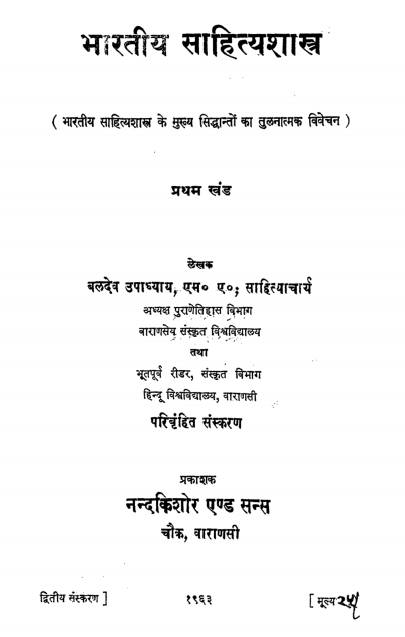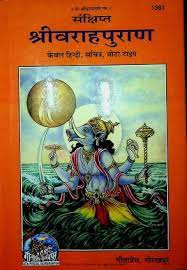Books in Indian Literature and Poetics. Mostly useful for NET or University students
Bharatiya Sahitya Shastra : भारतीय साहित्य शास्त्र
Bharatiya Sahitya Evam Kavya Shastra, or Indian Literature and Poetics, is a rich field of study that delves into the theories, principles, and aesthetics of literary criticism and poetry in Indian literature. Indian Poetics has a long tradition, with significant contributions from ancient and medieval scholars who developed comprehensive theories on poetry, drama, and literary aesthetics. Here’s an introduction to some of the key texts and authors in classical Sanskrit Poetics:
1. Natyashastra by Bharata Muni
- Era: Between 200 BCE and 200 CE.
- Synopsis: The Natyashastra is a comprehensive treatise on the performing arts, encompassing theatre, dance, and music. It includes a detailed examination of dramatic theory, stagecraft, and the principles of aesthetics.
- Key Concepts: Rasa (emotional flavour), Bhava (emotional state), Dharmi (styles of performance), and Natya (dramatic representation).
2. Kavyaprakasha by Mammata
- Era: 11th century CE.
- Synopsis: The Kavyaprakasha is a seminal work on poetics that systematically discusses the nature of poetry, its components, and the process of poetic creation. It is structured as a dialogue between a teacher and a student.
- Key Concepts: Alamkara (figures of speech), Rasa, Dhvani (suggestion), and Vakrokti (indirect expression).
3. Sahityadarpana by Vishwanatha Kaviraja
- Era: 14th century CE.
- Synopsis: The Sahityadarpana (The Mirror of Composition) is an extensive treatise on Sanskrit poetics that covers a wide range of topics, including definitions of poetry, its purpose, and various literary devices.
- Key Concepts: Rasa, Alamkara, Dhvani, and the classification of poetic genres.
4. Rasagangadhara by Jagannatha Pandita
- Era: 17th century CE.
- Synopsis: The Rasagangadhara is a detailed analysis of rasa theory, exploring the nature of aesthetic pleasure and the role of emotions in poetry. It also critiques earlier theories and offers new insights.
- Key Concepts: Rasa, Bhava, and the aesthetic experience of poetry.
5. Dhvanyaloka by Anandavardhana
- Era: 9th century CE.
- Synopsis: The Dhvanyaloka (The Light of Suggestion) is a groundbreaking work that introduces the concept of Dhvani (suggestion) as the soul of poetry. It emphasizes the power of implied meaning in enhancing poetic beauty.
- Key Concepts: Dhvani, Vyanjana (suggestion), and the layers of meaning in poetry.
6. Vakroktijivita by Kuntaka
- Era: 10th century CE.
- Synopsis: The Vakroktijivita (The Life of Artistic Obliqueness) focuses on the concept of Vakrokti (oblique expression) as the essence of poetic creativity. It explores how poetic excellence is achieved through inventive and indirect expression.
- Key Concepts: Vakrokti, Kuntaka’s unique classification of literary devices, and the aesthetic effect of stylistic obliqueness.
7. Sahityamimamsa by Rajasekhara
- Era: 10th century CE.
- Synopsis: The Sahityamimamsa (Investigation of Literature) is a comprehensive treatise that examines various aspects of literature, including its definition, purpose, and the qualifications of a poet.
- Key Concepts: Sahitya (literature), Kavi (poet), and the nature of poetic inspiration.
8. Kavyamimamsa by Rajashekhara
- Era: 10th century CE.
- Synopsis: This treatise focuses on the practical aspects of poetry, providing insights into the process of poetic composition, the attributes of a good poet, and the classification of poetic genres.
- Key Concepts: Poetic genres, the role of imagination in poetry, and the techniques of composition.
9. Sringarashataka by Bhartrihari
- Era: 5th century CE.
- Synopsis: The Sringarashataka is a collection of a hundred verses dedicated to the theme of love (Sringara). It is known for its exploration of romantic and aesthetic emotions.
- Key Concepts: Sringara (romantic love), Rasa, and the expression of emotions in poetry.
Conclusion
The texts on Bharatiya Kavya Shastra offer profound insights into the theory and practice of Indian poetics. These works explore various dimensions of literary aesthetics, from the emotional impact of poetry (rasa) to the suggestive power of language (dhvani) and the creative use of literary devices (alamkara). Through these seminal texts, ancient and medieval scholars have laid a rich foundation for understanding and appreciating the nuances of Indian literature and its enduring legacy.
Hindi Books on Introduction and Analysis of Above Bharatiya Kavya Shastra
Bharatiya Kavya Shastra Ke Siddhant – Krishn Dev Sharma
Bharatiya Sahitya Shastra Part – 1 by Baldev Upadhyay
32 MB 
Bharatiya Sahitya Shastra Part – 2 by Baldev Upadhyay
21 MB 
Bhartiya Tahtha Pashchatya Kavya Shastra – Dr. Archana Srivastava
56 MB 
Kavya Shastra Evam Kavya Parishilan – Dr. Girija Shankar Shastri
104 MB 
Kavyang Kaumudi Kala – 2 By Vishwanath Prasad Mishr and Mohan Vallabh Pant (2009)
61 MB 
Kavyang Kaumudi Kala – 3 by Vishwanath Prasad Mishr
9 MB 
Kavyang Vivechana by Bhagirath Mishr and Balbhadra Tiwari
70 MB 
Kavyashastra Aur Sahityalochan-final-1
1.22 MB 
Pracheen Bharatiya Sahitya Ki Sanskritik Bhoomika by Ramji Upadhyay
70 MB 
Sahitya Darpan Kosha – Dr. Raman Kumar Sharma
75 MB 
Sahityalochan – Ajay Kumar Jha (Scan)
8 MB 
Sanskrit Alochana – Baldev Upadhyay
23 MB 
Sanskrit Kavi Darshan – Dr Bhola Shankar Vyas – Chowkhamba
40 MB 
Sanskrit Kavya Shastra Aur Kavya Parampara – Radhavallabh Tripathi
66 MB 
Sanskrit Kavya Shastra Evam Kavyang – Dr Priti Prabha Goyal
62 MB 
Sanskrit Kavya Shastra Ki Arvachin Parampara – Rajmangal Yadav
116 MB 
Sanskrit Sahitya Ka Aalochanatmak Itihaas Dwiteey Bhaag (Natya Sahitya Pratham Khand) – Ramji Upadhyay
67 MB 
Sanskrit Sahitya Ka Alochanatmak Itihaas by Ramji Upadhyay (Rare book from Lucknow Library)
24 MB 
Sanskrit Sahitya Ka Abhinav Itihaas by Dr Radha Vallabh Tripathi, Varanasi
310 MB 
Sanskrit Sahitya Ki Roop Rekha by Chandrashekhar Pandey and Shantikumar Vyas
Sanskrit Sahitya Mein Anyokti – Dr Rajendra Mishr
Related products
Gita Govindam : गीतगोविन्दम्
LiteratureVimanika Shastra : विमानिका शास्त्र
Literature






